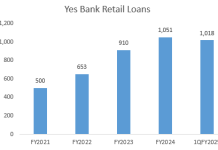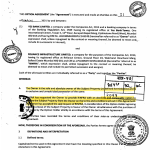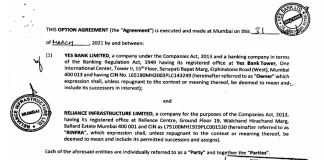There is a paucity of demand of India – which requires an expansionary fiscal policy to revive employment, growth and investment.

Money. Credit: PTI

Hemindra HazariBANKINGBUSINESSECONOMY01/FEB/2018
There was widespread apprehension in the capital market that 2018 budget would be “populist” and voter-friendly in a year when state elections may be simultaneously held with a national election.
Indeed the dressing is there: hardly had Jaitley finished his speech than the channels started telling us this budget was all about health and agriculture. However, the bigger numbers suggest otherwise: after a slight fiscal relaxation in the current year, the government has projected a fiscal contraction for FY 2019. The fiscal deficit is expected to decline to 3.3% from 3.5% in FY 2018.
The monetarist economists populating most capital market-related firms, brokerage research, and credit rating agencies, as well as the bond market, may be apprehensive that the deferring of the fiscal glide path of 3% between FY 2018 and FY 2020 will lead to a rise in bond yields and inflation.
However, the major issue confronting the Indian economy is not demand-pull inflation, but a paucity of demand, which requires an expansionary fiscal policy to revive employment, growth and investment. It is also pointless trying to control inflation emanating from international oil prices by suppressing domestic demand, a recipe for stagflation.

Source: Union Budget papers.
Sadly, over the years, total central government expenditure to GDP has been on the decline.
In FY 2018 (RE) it increased marginally to 13.2% – including the recap bonds of Rs 80,000 crores, it comes to 13.7%, as compared with 13.1% in FY’2017. In FY 2019 (BE), central government expenditure to GDP decreases to 13% (including the recap bonds of Rs 65,000 crores, it would be 13.4%).
The obsession with fiscal contraction and the impact any relaxation will have on foreign capital flows and the bond market has dictated fiscal policy of both the UPA and the NDA governments; in this both Congress and the BJP are in complete agreement.
With such policies it is no surprise that the Indian economy is stagnating, with private sector investment and employment in the doldrums (notwithstanding some academics arguing that employment has increased in the formal sector).
Investment & savings (as % of GDP)

Source: Economic Survey, 2017-2018.
It is in this context that the twin balance sheet problem has to be seen.
The consensus view in the government and the market is that if the balance sheets of indebted corporate India and the government banks are mended, growth and investments would revive. To facilitate the strategy the Insolvency and Bankruptcy Code was introduced and a belated recapitalisation of the government banks was announced. The recap, even if unnecessarily delayed, may revive lending a bit. But even if the twin balance sheet issue is resolved, growth in private capital investment and employment may not really revive if demand in the Indian economy remains weak. Indeed, an academic paper by J Dennis Rajakumar in 2015 argued, contrary to popular opinion, the Indian corporate sector in its entirety was not over-leveraged and the bulk of the companies who were under-leveraged were not investing as it was not profitable on account of poor demand.
The notion that government should increase capital investment but at the same time contract other expenditure, thus reducing the fiscal deficit, fails to grasp that it is weak aggregate demand that is the problem, and a declining fiscal deficit will merely aggravate matters.
A sector which may benefit handsomely is health insurance, where a few companies have been recently listed on the stock market. The budget announced the launch of a “flagship National Health Protection Scheme to cover over 10 crore poor and vulnerable families (approximately 50 crore beneficiaries) providing coverage upto 5 lakh rupees per family per year for secondary and tertiary care hospitalisation.” A coverage of Rs 5 lakh per family is substantial, but in the budget papers there appears to be no specific outlay for such a huge scheme.
In a media interaction post-budget, Arvind Subramanian indicated that it will be financed through the education and health cess. It appears the government is attempting to replace its responsibility to provide public healthcare with tacit subsidies to private healthcare in the form of insurance premiums. It may prove to be a bonanza for private health companies. A similar exercise in crop insurance proved highly lucrative for private health insurers but did not provide relief to small farmers.
To the extent that this budget appears to be little different from earlier fiscal-consolidation budgets, corporate earnings may not significantly improve. The hope that corporate performance may improve on the back of rising exports and global growth has to also be seen in the light of hardening global bond yields and the disruption in capital flows it may cause to emerging economies.
The Indian capital market for some time has decoupled from fundamentals, driven by liquidity, even as corporate earnings have stagnated. Hence the future of the Indian stock market may be influenced by shifting developments in developed economy interest rates and domestic liquidity, instead of fundamentals. Arvind Subramanian had in his earlier Economic Surveys argued for fiscal expansion but in the present environment of a revival in global growth and higher bond yields, he believes the space is now closed.
The Narendra Modi government has implemented major reforms without any revival in private sector capital expenditure and yet the monetarist economists push for even more reforms and further privatisation. The only game left in town is for India to be spruced up and wait in vain to be picked up. In this regard, budget 2018-2019 may prove to be a mere footnote in the tenure of the NDA government.
Hemindra Hazari is an independent market analyst.














